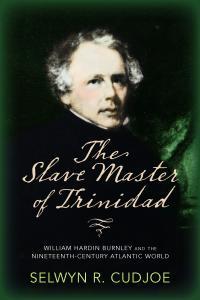Karen's foibles
By Dr Selwyn R. Cudjoe
January 16, 2024
"Ah did tell Karen, at least in my dream, not to storm de people fete (ah mean de funeral). I told her, don't go where you are not wanted and most of all, never make yo' self a pappy show among Trini people. They will never let you forget it. Consumed with self-importance, Karen responded: ĎAh have to show respect and honour Panday's remarkable career, so ah going.'"
And then the tragi-comic moment occurred. In her enthusiasm to be seen, Karen jumped the fence that kept out uninvited guests to be among the "Who's Who" at that important national event. Journalist Anna Ramdass described the event: "Political leader Timothy Hamel Smith and deputy leader Karen Nunez-Tesheira created a scene when they jumped the railing to enter the Southern Academy for the Performing Arts (SAPA), San Fernando... being unsuccessful in getting onto the compound for the funeral of former prime minister Panday."
Here were two leaders of a newly formed party (ironically called "HOPE") displaying the dark side of our national character and the picaresque dimension of our people's behaviour. Hopefully, HOPE will not repeat such troubling behaviour in the future. It will undermine any uplifting activity that it undertakes.
It's not for nothing that VS Naipaul described Trinidad as a picaroon society with a taste for corruption, tricksters, dotishness, and a lack of respect for other people (The Middle Passage). At least, Hamel-Smith had the good sense to apologise for his "unorthodox entry" into the event, an understatement if ever there was one. Karen, however, had a "good laugh after SAPA" as an Express headline proclaimed. It seemed such fun.
I wanted to attend the funeral to pay tribute to Basdeo Panday for the contributions he made to our country. He was a quintessential Trinbagonian; his passing touched something deep within our national psyche that needed to be released, regardless of our ethnic or racial affiliation. This is why the country's sentiments for the man poured out with such unbridled enthusiasm. He was us and we were him.
I had planned on spending a few days in Trinidad, after which I planned to go to Codrington College, Barbados, the oldest Anglican theological seminary in the Western Hemisphere, to continue my research on Philip Henry Douglin and Joshua Stanley, the two Caribbean preachers about whom I am writing. On Sunday last, I changed my airline ticket so that I could attend Panday's funeral on Tuesday morning.
Alas, I was not among the "Who's Who", the special people in the country who qualified for an invitation to attend the funeral. And it wasn't for a want of trying. I asked various people who I thought could be of assistance, but I wasn't successful. I was told that SAPA's seating capacity was 600 people, with half of the seats reserved for diplomats and people of that ilk. Panday's family controlled the next 300 seats. I wasn't acquainted with Panday's family, so I refrained from asking them for such a favour.
I didn't make a big thing about it. From childhood, my mother had told me: "Know your place. Never go any place where you are not wanted." As a humble but frustrated citizen, I spent the day at the National Archives on St Vincent Street, Port of Spain, researching my project.
I flew out to Barbados on Tuesday evening to continue my academic work. On Wednesday morning, I proceeded to Codrington College to examine its archival collection and to see the burial site of Bishop Richard Rawle, an early principal of Codrington College, the first bishop of Trinidad and Douglin's mentor.
The college's library was being fumigated so I proceeded to the Holy Cross Church, about a mile away, where Rawle was interred after serving faithfully in Barbados and Trinidad. The Holy Cross Church is located atop a steep hill. A plaque in front of the church proclaims: "The church stands as a sentinel over the ocean, across which enslaved persons travelled from Cape Coast, Africa, and against human trafficking in the present."
I decided to walk up the hill in retrospective solidarity with the formerly enslaved who took turns at carrying Rawle's coffin from the college, where the funeral service was held, to Holy Cross Church where he was interred. They did this to honour the work Rawle had done among them and the love they had for him. It took me about 20 minutes to get to the top of the hill, but I was repaid by a splendid view of that part of the island.
The plaque reminds visitors that the church was erected in wood in 1819 and rebuilt in stone in 1833. It also says that the church's original purpose was "to minister to its enslaved community and a rapidly changing community". It still serves as "a reminder of a cruel past and a challenge to the future".
The words on that plaque reminded me of my mother's wisdom: know your place and always remain humble. Do your work, as God gives you to see your work, but never get into people's face to show them how important you are. It is better that your presence is felt rather than be seen as intrusive. Most important, "Let your light so shine before men, that they see your good works rather than be blinded by an arrogant display of pomposity."
—Prof Cudjoe's e-mail address is scudjoe@wellesley.edu. He can be reached @ProfessorCudjoe.
Share your views here...

The Slave Master of Trinidad by Dr. Selwyn R. Cudjoe
|

